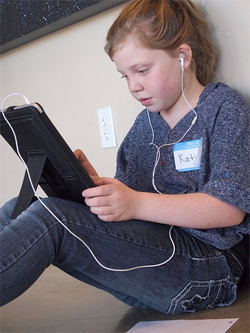3. Make every minute count
Reduce time spent uploading, downloading and synchronising files between devices by implementing technology that allows files to be opened on devices anywhere, and on any operating system.
4. Consider the interface and user experience
Delivering content and data to devices may be possible but it may not create a pleasant or productive user experience. By allowing device specific applications to have access to data and resources, the synergy between the user interface and device can be maximised.
5. Be e-safety aware
The safety and security of students is paramount, and it’s as much about individual behaviour as it is the technology. A school’s Acceptable Use Policy (AUP) should be updated to reflect the changes that BYOD brings, and users should be regularly educated about potential threats and how to avoid them.
6. Mitigate risks
A balance should be reached between the level of appropriate security and what is reasonable in terms of usability. When addressing data security risks consider the following: Mobile Device Management; virtual desktop; web filtering; encryption; passwords; and security of applications.
7. Think before you print
To enable students and teachers to print from any device, print management software is essential. It also helps schools save money by requiring less staff intervention and eliminating wastage.
8. Avoid the device dilemma
Interoperability is another key consideration. Not all devices are compatible, therefore it may be necessary to limit users to just one or two brands of devices.
9. Consider purchase schemes
The introduction of staff and parental purchase schemes can ensure BYOD is a viable option for all by removing potential cost barriers.
10. Ensure you’re insured
Consider the insurance implications of this new trend and ensure that existing policies reflect the changes that BYOD brings, particularly in relation to theft and damage.
Has your school adopted a BYOD model? Do you have any unique tips to share? Let us know below.
Photo credit: flickingerbrad


















